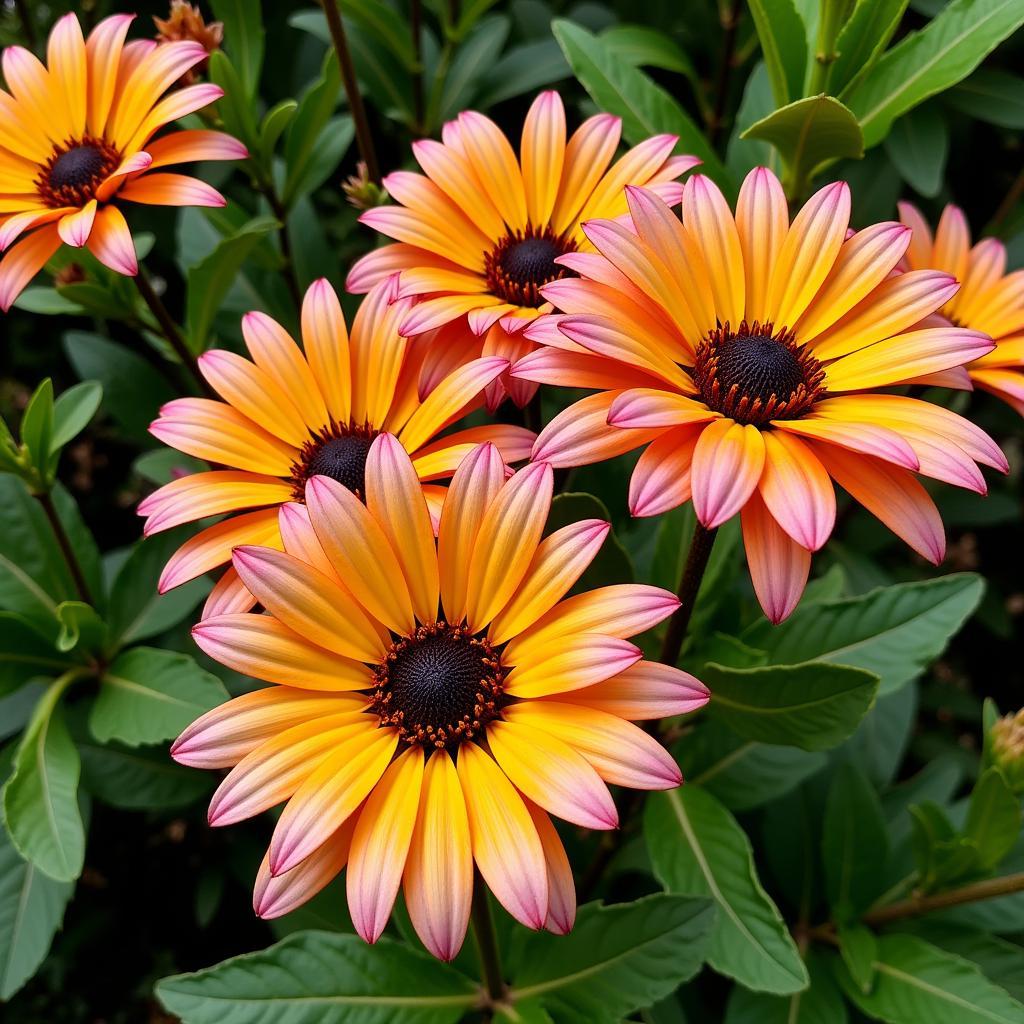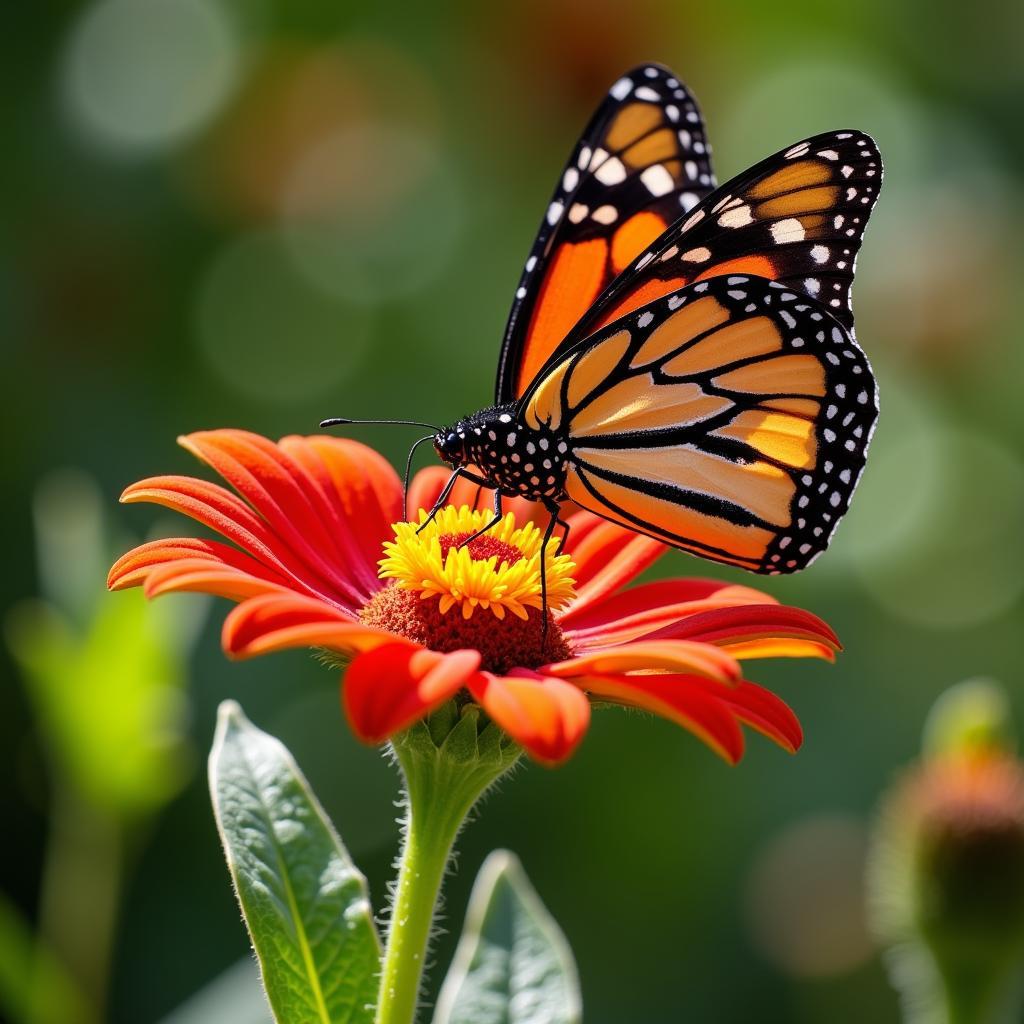Unveiling the African Daisy Tree: A Burst of Sunshine from the Savanna
The African Daisy Tree, scientifically known as Osteospermum, is more than just a pretty face in the savanna. This vibrant plant, native to Southern Africa, offers a captivating blend of beauty and resilience that has captivated gardeners and nature enthusiasts alike.
A Closer Look at the African Daisy Tree
Unlike its namesake, the common daisy, the African daisy tree isn’t a true tree. Instead, it’s a flowering shrub that can reach heights of up to 1.5 meters. Its woody stems bear an abundance of colorful, daisy-like flowers that bloom profusely throughout the warmer months, painting the landscape with hues of purple, pink, orange, yellow, and white.  African Daisy Tree in Bloom
African Daisy Tree in Bloom
Why Choose the African Daisy Tree?
The allure of the African daisy tree extends beyond its visual charm. This hardy plant is remarkably low-maintenance, thriving in full sun and well-drained soil. Its drought-tolerant nature makes it a perfect choice for arid regions, while its ability to withstand coastal conditions makes it a favorite in seaside gardens.
African Daisy Tree: A Gardener’s Delight
For those seeking a burst of long-lasting color in their gardens, the African daisy tree is an ideal choice. Here’s why:
- Prolific Blooming: From late spring to fall, the African daisy tree puts on a spectacular floral display, with countless blooms gracing its branches.
- Variety of Colors: With a spectrum of colors to choose from, there’s an African daisy tree to suit every taste and garden aesthetic.
- Easy Care: These resilient plants require minimal upkeep, making them suitable even for novice gardeners.
- Attracts Pollinators: The vibrant blooms act as magnets for bees and butterflies, adding a touch of life and movement to your garden.
 African Daisy Tree Attracting Pollinators
African Daisy Tree Attracting Pollinators
Cultivating Your Own African Daisy Tree
Growing your own African daisy tree is a rewarding experience. These adaptable plants can be grown from seeds or cuttings.
Growing from Seeds:
- Sowing: Sow the seeds in a well-drained seed starting mix, lightly covering them with soil.
- Sunlight: Place the tray in a sunny location, ensuring the soil remains moist.
- Transplanting: Once the seedlings are sturdy enough, transplant them to larger pots or directly into the ground.
Growing from Cuttings:
- Taking Cuttings: Take cuttings from a healthy African daisy tree during the spring or summer.
- Rooting Hormone: Dip the cut end in rooting hormone to encourage root development.
- Planting: Plant the cuttings in a well-draining potting mix and keep them in a warm, humid environment until they root.
Caring for Your African Daisy Tree
Once established, the African daisy tree requires minimal care. Regular watering, especially during dry spells, is essential. Deadheading spent blooms encourages continuous flowering, while occasional pruning helps maintain a desirable shape and size. african daisy phylum
Beyond the Garden
While the African daisy tree is primarily known for its ornamental value, it holds a special place in traditional medicine. In some cultures, extracts from its leaves and roots are used to treat a range of ailments. african all type of flowers
Conclusion
The African daisy tree, with its radiant blooms and resilient nature, embodies the vibrant spirit of the African savanna. Whether gracing a garden, adding a splash of color to a balcony, or simply captivating onlookers in their natural habitat, these enchanting plants are a testament to the beauty and diversity of the natural world. To experience the charm of the African daisy tree firsthand, consider adding one to your own green haven. african flower names and meanings
Frequently Asked Questions
Q: What is the best time to plant an African daisy tree?
A: The ideal time to plant is in spring or fall, when the weather is mild.
Q: How often should I water my African daisy tree?
A: Water regularly, especially during dry periods, allowing the soil to dry slightly between waterings.
Q: Does the African daisy tree attract pests?
A: While generally pest-free, they can occasionally attract aphids or spider mites. african beautiful flowers
Q: Can I grow an African daisy tree in a pot?
A: Yes, they can be successfully grown in pots, provided they have adequate drainage. african flowering plants
Q: How long do African daisy trees live?
A: With proper care, they can live for several years.
Need help with your African Daisy Tree?
Contact us 24/7 for assistance:
Phone: +255768904061
Email: [email protected]
Visit us: Mbarali DC Mawindi, Kangaga, Tanzania.


